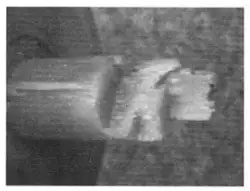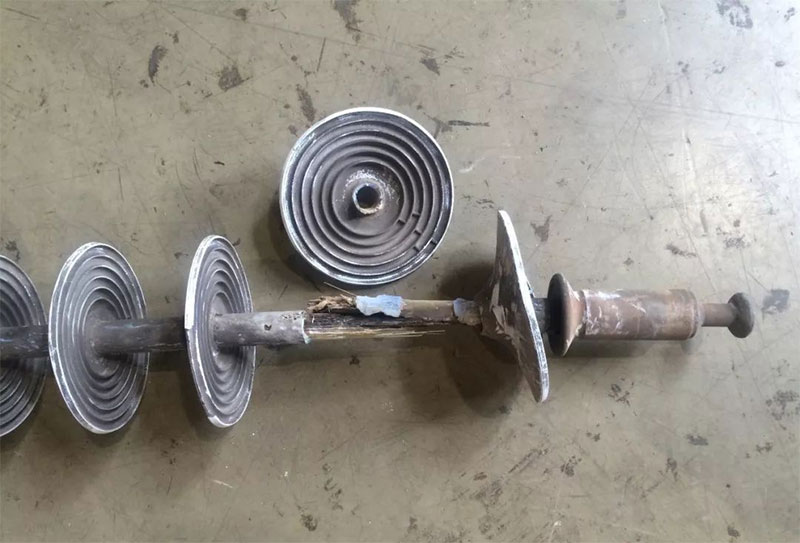Composite insulator string breakage forms can be divided into three categories: external force tearing, brittle fracture, and decay fracture. Among them, external force tearing cases are very rare, and brittle fracture and decay fracture are the main types of string breakage.
1. External force tearing:
External force tearing is often caused by extreme strong winds, severe ice covering of lines, ice shedding and jumping, etc. In these cases, the stress on the composite insulator exceeds the design, resulting in string breakage.
In general, the part with controlled mechanical strength is generally the ball neck, that is, when only tensile stress is applied, the ball fitting is often the first to break. However, when subjected to the combined action of torsional stress, tensile stress or compressive stress, the connection between the composite insulator hardware and the core rod is the most vulnerable, so the fracture position is often located at the connection between the insulator hardware and the core rod.
The composite insulator core rod is made of high-strength fiber glass. When it is locally damaged and then torn under the combined action of torsional stress and tensile stress, the core rod fracture is often uneven, some fibers are broom-shaped, and there is no trace of carbonization on the fracture, as shown in Figure 1.

Figure 1 Typical fracture caused by external force tearing
2. Brittle fracture (stress corrosion)
Brittle fracture is the main type of string breakage in the early application of composite insulators. Its fracture process is accompanied by stress corrosion process. The fracture position may be located inside the hardware or near the connection between the hardware and the core rod.
The most obvious feature of the brittle fracture is that most of the fracture is flat and smooth, and the cross section is perpendicular to the core rod axis. The typical fracture morphology is shown in Figure 2.

(a)Smooth fracture

(b)The fracture is step-shaped, and each step is flat
Figure 2 (a) and (b) Typical fracture morphology of composite insulator brittle fracture
3. Corrosion fracture (core rod carbonization)
Corrosion fracture has become the main form of composite insulator string fracture in recent years. Its string fracture is accompanied by a long-term internal discharge process, and the fracture is generally located near the high-voltage end of the composite insulator.
The main appearance characteristics of the corrosion fracture are the presence of significant core rod carbonization (blackening), and the fracture is uneven and has obvious wire drawing. The typical fracture morphology is shown in Figure 3.

Figure 3 Typical fracture morphology